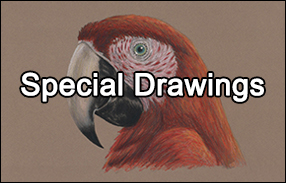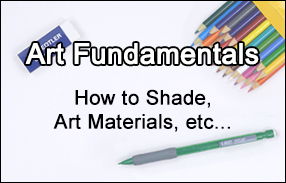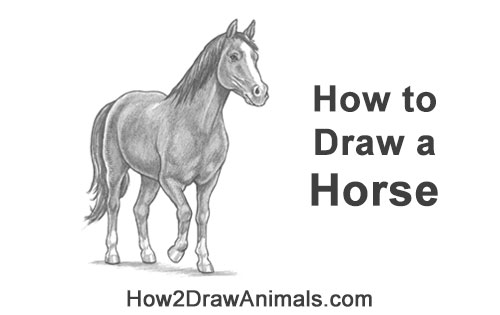
In this free art lesson, you'll learn how to draw a horse stepping forward step-by-step.
Stay tuned for more free drawing lessons by:
Liking us on Facebook>>
Subscribing on YouTube.com>>
Following us on Instagram>>
All of the tutorials on How2DrawAnimals.com are good drawing tutorials for beginners and experienced artists alike. The online tutorials are easy to follow; they teach you the how to draw basics while showing you how to draw animals step by step. Each animal has a video drawing tutorial option, as well as step-by-step photos and written text to follow.
RELATED TUTORIALS
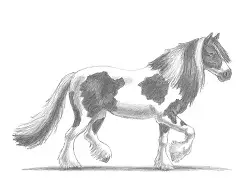 |
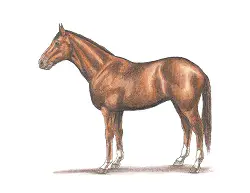 |
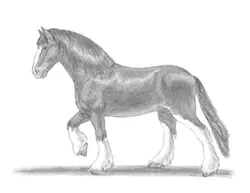 |
To draw this horse step by step, follow along with the video tutorial below and pause the video after each step to draw at your own pace. You may find it easier to follow the step-by-step drawings below the video. The new lines in each step are shown in red, so you'll know exactly what to draw next. You may want to open the video in a new tab and use both drawing methods. Take your time and draw at your own pace.
Below you can watch a Narrated step-by-step video tutorial:
For the first few steps, don't press down too hard with your pencil. Use light, smooth strokes to begin so that it's easy to erase if you make a mistake.

Step 1: Draw a circle near the middle of the paper as a guide for the front part of the horse's body. First make four small marks to indicate the circle's height and width. Then connect the marks using curved lines. Sketch lightly at first so that it's easy to erase if you make a mistake. If you're struggling to draw the circle, trace the outer rim of a coin, a bottle cap or any other object with a circular edge. For a more detailed guide on the different ways to draw a circle check out this tutorial: Four simple ways to draw a circle.
To the left draw a circular shape as a guide for the back portion of the body. Don't overlap the first circle as you draw the back portion of the body. Make this shape slightly smaller than the first circle and place it a bit higher.
On the top, right side of the first circle, draw a smaller circle as a guide for the head. Make this circle about half the size of the first circle. Pay attention to the placement of the head circle in relation to the body; if you draw it too high, the neck will be too long.

Step 2: Inside the head circle, draw a long diagonal line. Extend the line so that it's outside of the circle. This is a construction line that will help you place the horse's facial features later. On the bottom, right side, draw an arc around the construction line as a guide for the muzzle. The muzzle should be big in relation to the head. On top of the head, draw two small, triangular shapes as guides for the ears. The ears should be similar to the letter M.
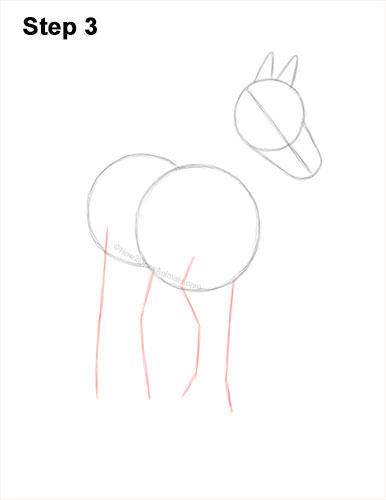
Step 3: Draw two long lines under the front of the body and two more lines under the back portion of the body as guides for the horse's legs. Bend the lines to indicate the joints on the legs. The lines shuld be quite long in relation to the body.
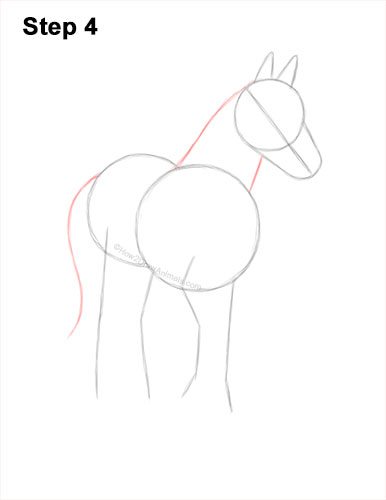
Step 4: Connect the head to the body using a couple of sloping lines to create the guide for the horse's neck. The shape of the neck should be wide. On the left side of the body, draw a long wavy line as a guide for the tail.
That's it for the guidelines! From this point on, press down harder with your pencil for a more defined drawing of a Horse.
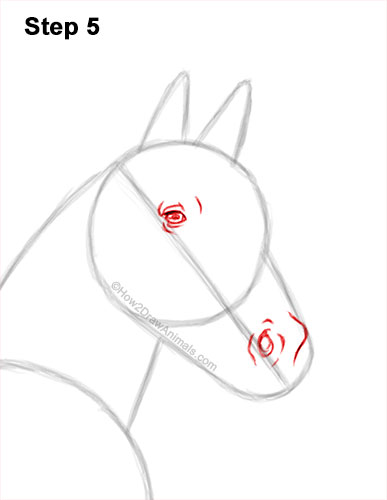
Step 5: Inside the head circle, draw a small oval for the horse's eye. Place the eye on the right side of the construction line and above the center of the head circle. Make the sides of the eye pointy for the corners of the eye. Inside the eye, draw a tiny circle for a highlight and a small oval for the pupil. Shade in the pupil. Draw a few curved lines around the eye for the brow's structure.
Near the tip of the muzzle, draw a small, drop-like shape for the nostril. Draw a few curved lines for the outer structure of the nostril. To the right, draw a longer curved line for th structure of the nostril that's on the other side of the head.
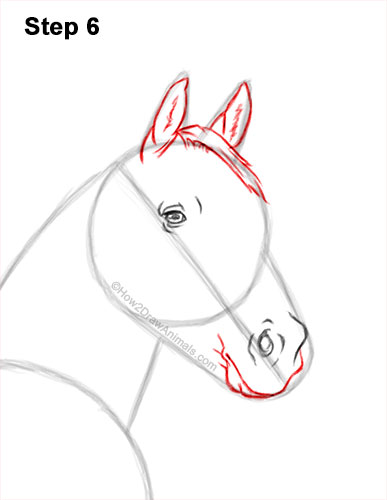
Step 6: Darken the triangular shapes on top of the head to create the horse's ears. Make the sides of the ears rounder than the guides. Add a few more lines for the ears' openings and for creases. Between the ears, draw a series of long sloping lines for the front part of the mane. Don't draw every hair strand on the mane; just draw the overall shape.
Below the nose, draw a few curved lines for the mouth and chin. Follow the curvature of the initial arc as you draw the lines. Add a few short lines on the left side of the mouth for creases.
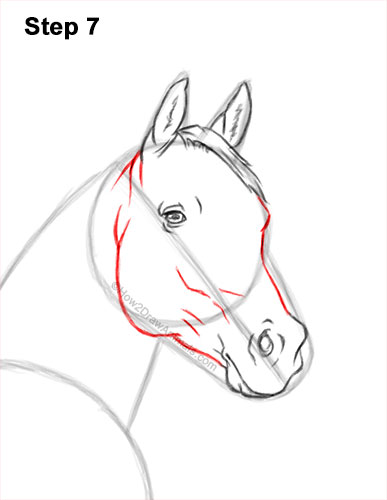
Step 7: Draw the rest of the horse's head along the path of the initial guides. Make the shape of the muzzle thinner than the guides. Draw a long, cuved line on the left side of the head for the strong jaw. Add a few short lines inside the head for creases.

Step 8: Use the lines under the front part of the body as guides to draw the front legs. Draw the legs around the guide lines. Sketch lightly at first and only darken the lines when you get the shapes right. Curved the outer edges of the legs to create the joints and muscle structure. At the bottom of each leg, draw a small sqaure-like shape for the hooves. Make sure that the bottom of the leg on the left is higher than the right because the horse is stepping forward.

Step 9: Use the long lines under the back portion of the body as guides to draw the horse' hind legs. Draw the legs around the guide lines. Keep the shapes of the legs thin. Bend the shapes to indicate the joints. At the bottom, add the hooves as small, square-like shapes.

Step 10: Use the remaining shapes and lines as guides to draw the rest of the horse's body. Draw a series of long, curved strokes along the neck for the tips of the mane. Darken the outer edges of the guides to create the shape of the body. Make the underside of the body more curved than the guides. Darken the line on the left side of the body for the outer edge of the tail. Draw more curved strokes for the rest of the tail.
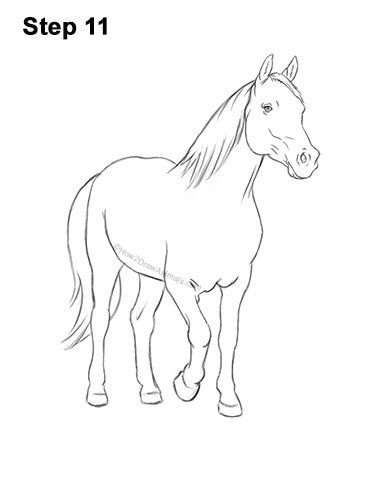
Step 11: For a cleaner look, erase as much as you can of the initial guide lines. Don't worry about erasing all of the guides. It's okay to leave some behind. Re-draw any final sketch lines you may have accidentally erased.
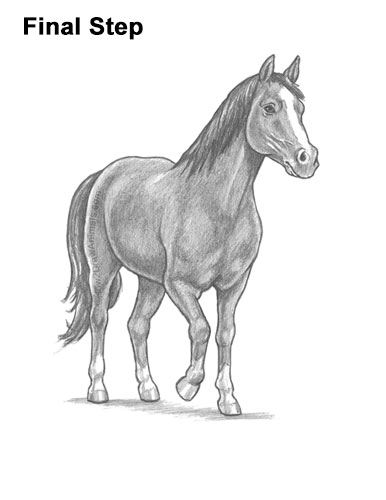
Final Step: Add some shading to your drawing for extra detail. Use a medium value for the main part of the body. Leave the front of the head blank for the white pattern. Use a light value for the bottoms of the leg and hooves. Add a slightly darker value across the body to create shadows. Shadows will give the figure more dimension and volume. Use a dark value to shade the mane and tail. For a more detailed guide on how to shade, check out this tutorial: How to shade.
Shade very lightly at first, and then gradually build up to the level of darkness that you want. To create light values, push down very lightly on your pencil, then push down harder for darker values. Add a cast shadow at the bottom using a medium value. Shading can be a very slow process, so be patient and take breaks. Continue adding value a little at a time until you're happy with the result. It's always a good idea to use reference for a more accurate drawing.
Thanks for visiting! Subscribe to the How2DrawAnimals YouTube Channel for a new tutorial every week.
To learn how to draw popular cartoon characters, visit EasyDrawingTutorials.com.
To learn how to draw Manga, visit How2DrawManga.com.
RELATED TUTORIALS
 |
 |
 |






